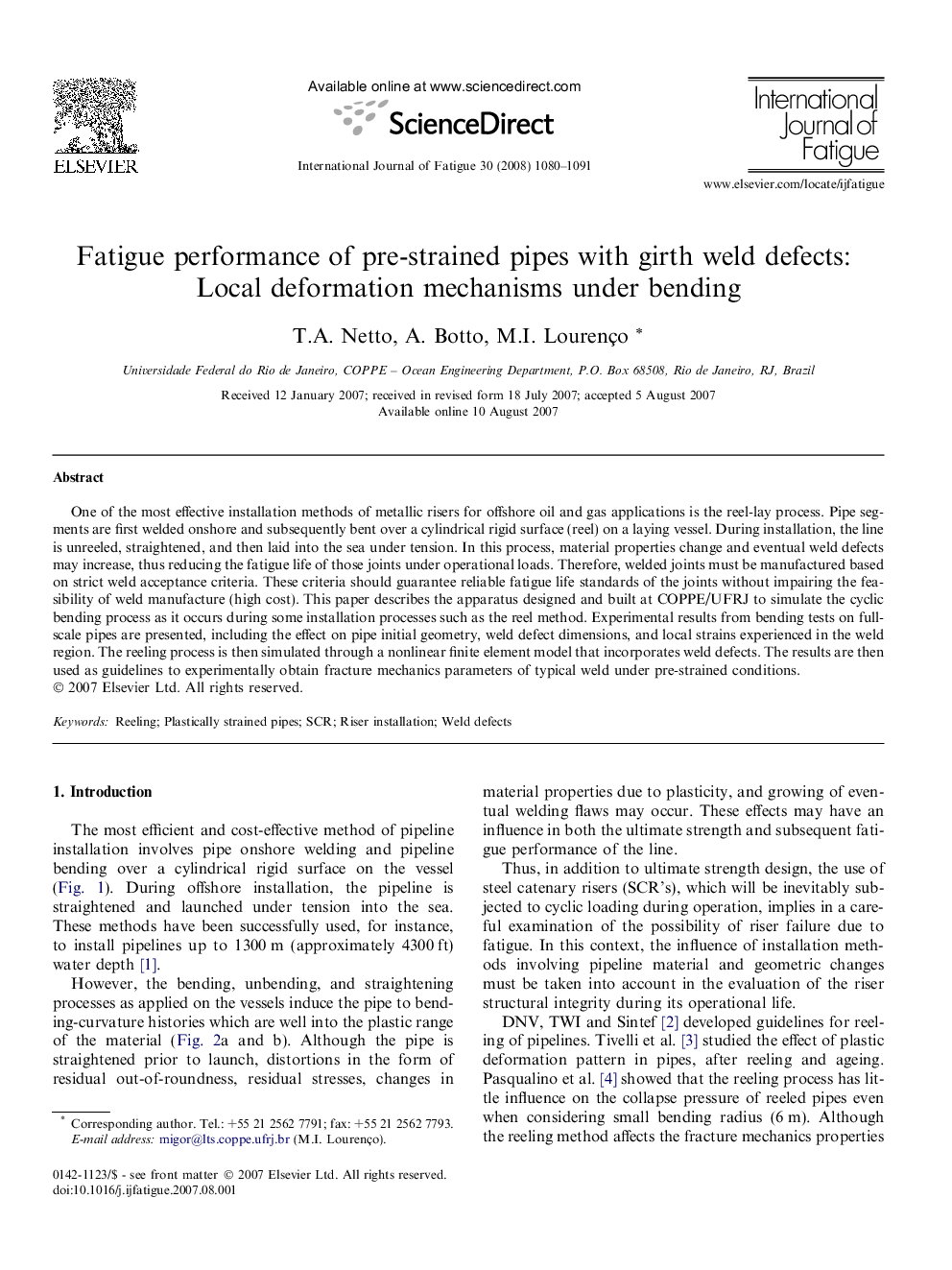| Article ID | Journal | Published Year | Pages | File Type |
|---|---|---|---|---|
| 777152 | International Journal of Fatigue | 2008 | 12 Pages |
One of the most effective installation methods of metallic risers for offshore oil and gas applications is the reel-lay process. Pipe segments are first welded onshore and subsequently bent over a cylindrical rigid surface (reel) on a laying vessel. During installation, the line is unreeled, straightened, and then laid into the sea under tension. In this process, material properties change and eventual weld defects may increase, thus reducing the fatigue life of those joints under operational loads. Therefore, welded joints must be manufactured based on strict weld acceptance criteria. These criteria should guarantee reliable fatigue life standards of the joints without impairing the feasibility of weld manufacture (high cost). This paper describes the apparatus designed and built at COPPE/UFRJ to simulate the cyclic bending process as it occurs during some installation processes such as the reel method. Experimental results from bending tests on full-scale pipes are presented, including the effect on pipe initial geometry, weld defect dimensions, and local strains experienced in the weld region. The reeling process is then simulated through a nonlinear finite element model that incorporates weld defects. The results are then used as guidelines to experimentally obtain fracture mechanics parameters of typical weld under pre-strained conditions.
